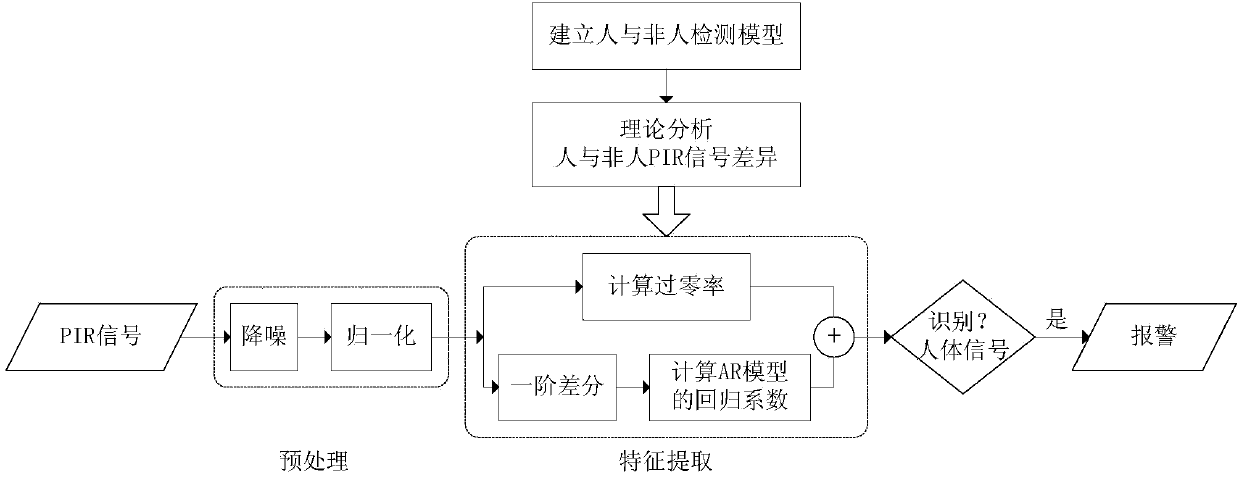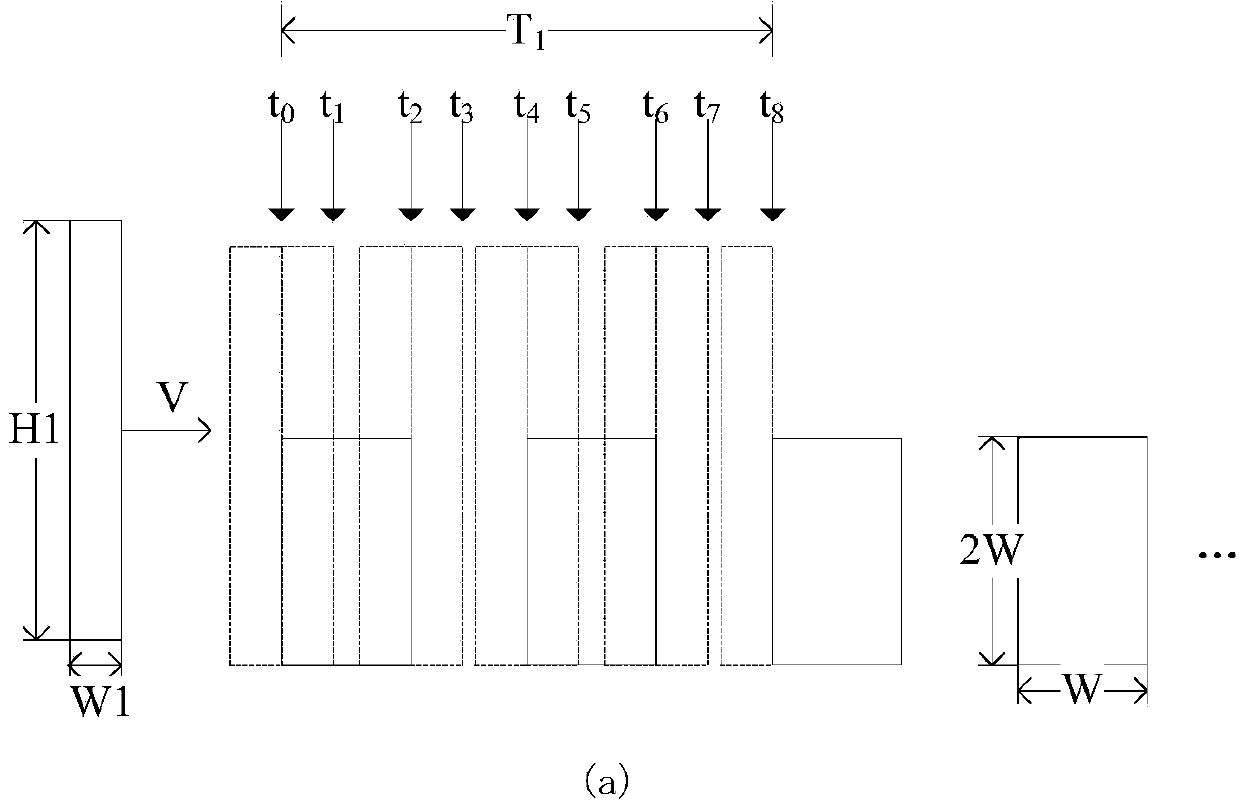Human and non-human object identification method based on PIR (Pyroelectric Infrared) detector
A recognition method and detector technology, applied in character and pattern recognition, instruments, and alarms that rely on interference with short-wavelength radiation, etc., can solve problems in the initial stage, with high algorithm complexity, and few PIR signal feature extraction methods, etc. problem, to achieve the effect of reducing false positives, simple algorithm steps, and avoiding signal non-stationarity problems
- Summary
- Abstract
- Description
- Claims
- Application Information
AI Technical Summary
Problems solved by technology
Method used
Image
Examples
Embodiment Construction
[0022] The present invention will be further described in detail below in conjunction with the accompanying drawings.
[0023] figure 1 It is an overall flow chart of the present invention, including the following two parts:
[0024] Part 1: Establish a human and non-human detection model to analyze the difference between human and non-human PIR signals. The specific content is as follows:
[0025] Based on the universal PIR detector, combined with the characteristics of human and non-human shape differences, the present invention establishes a human and non-human detection model such as figure 2 shown. With the help of this model, in theory, the difference between human and non-human PIR signals can be qualitatively and quantitatively analyzed, the specific content is as follows:
[0026] First, according to the size of the human body (effective wide radiation surface width W1 and height H1) and the size parameters of the light and dark areas of the PIR detector, it is obtai
PUM
 Login to view more
Login to view more Abstract
Description
Claims
Application Information
 Login to view more
Login to view more - R&D Engineer
- R&D Manager
- IP Professional
- Industry Leading Data Capabilities
- Powerful AI technology
- Patent DNA Extraction
Browse by: Latest US Patents, China's latest patents, Technical Efficacy Thesaurus, Application Domain, Technology Topic.
© 2024 PatSnap. All rights reserved.Legal|Privacy policy|Modern Slavery Act Transparency Statement|Sitemap



